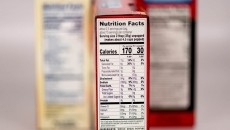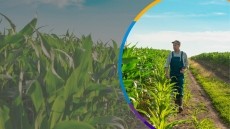Guest Article
Advertising could calm food safety fears, study
when a product is linked to food safety concerns, write a team of
economists and psychologists at Cornell University.
Our recent study indicates that certain responses to food safety scares could have mitigating effects on consumer purchasing behavior.
The study, which focused on consumer responses to mad cow disease, involved 227 people of various backgrounds, aged between 18 and 63. Participants were shown different information designed to assess the effects of negative media reports and industry advertising on consumers' willingness-to-pay (WTP) for potentially risky foods.
After earning up to $15 from a series of experimental activities, participants watched different multi-media presentations. Some participants watched one of two five-minute videos, some participants watched both videos, and as a control, some did not watch either video. Finally, all participants were shown a freshly-cooked hamburger and asked how much they would pay for it.
One of the two videos that had been presented contained information about mad cow disease including its potential existence in the US food supply and the deadly consequences of contracting new variant Creutzfeldt - Jakob disease from eating infected beef.
The other video was comprised of a series of television and radio advertisements by the National Cattlemen's Beef Association, which emphasized the slogan "Beef, It's What's for Dinner."
Using standard elicitation techniques which reward participants for honest answers, participants were asked for the highest amount of money they would pay to buy a hamburger that they would be able to eat immediately.
As anticipated, the participants that watched just the advertising video had the highest average WTP for the hamburger, $2.52. This was higher than the $2.14 WTP in the control group, which did not see either video.
However, the participants who saw only the video with information about mad cow disease had significantly lower WTP of just $0.88. The fact that people were willing to pay less for a product after learning of its association with a health risk was far from surprising.
The most telling result, however, was revealed when subjects watched both the video about mad cow disease and the beef advertising. In this case, the average WTP was $2.07 - just 3.3 percent less than the control group that watched no videos.
This result was consistent regardless of the order in which the videos were watched.
These findings suggest that adverting may have a powerful effect in offsetting consumer concerns that may arise upon seeing media coverage of negative safety news.
In fact, the benefit of advertising seems to be greatest in situations with uncertain safety risks, since WTP increased 135 percent when exposing consumers to commodity promotion as well as just negative product information.
This compares to just an 18 percent increase in WTP when consumers watched only product advertising, as opposed to watching nothing at all.
These results suggests that advertising may play a valuable role in helping inoculate consumers from dramatically changing their purchasing behavior in the face of reports of uncertain health risks associated with various foods.
It is interesting to note the historic response by the beef industry in wake of the December 2003 discovery of the first cow infected with mad cow disease in the United States. Less than a month after the discovery, the National Cattlemen's Beef Association quickened the release of a new advertising effort and increased funding by an additional $1.3 million.
Perhaps in part due to this action, subsequent beef industry research suggested that the percentage of consumers who were confident that US beef was safe from mad cow disease did not decrease. Thus, from the beef industry's perspective, their decision to increase advertising at that time might have been an optimal response.Funding for this research was provided by the National Institute for Commodity Promotion and Economic Evaluation and the National Science Foundation.











